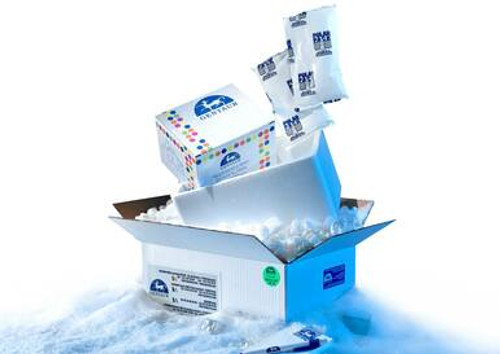Product Description
anti- LGR4 antibody is available at Gentaur for Next week Delivery.
Purification: Immunogen affinity purified
Background: Receptor for R-spondins that potentiates the canonical Wnt signaling pathway and is involved in the formation of various organs. Upon binding to R-spondins(RSPO1, RSPO2, RSPO3 or RSPO4), associates with phosphorylated LRP6 and frizzled receptors that are activated by extracellular Wnt receptors, triggering the canonical Wnt signaling pathway to increase expression of target genes. In contrast to classical G-protein coupled receptors, does not activate heterotrimeric G-proteins to transduce the signal. Its function as activator of the Wnt signaling pathway is required for the development of various organs, including liver, kidney, intestine, bone, reproductive tract and eye. May also act as a receptor for norrin(NDP), such results however require additional confirmation in vivo. Required during spermatogenesis to activate the Wnt signaling pathway in peritubular myoid cells. Required for the maintenance of intestinal stem cells and Paneth cell differentiation in postnatal intestinal crypts. Acts as a regulator of bone formation and remodeling. Involved in kidney development; required for maintaining the ureteric bud in an undifferentiated state. Involved in the development of the anterior segment of the eye. Required during erythropoiesis. Also acts as a negative regulator of innate immunity by inhibiting TLR2/TLR4 associated pattern-recognition and proinflammatory cytokine production. Plays an important role in regulating the circadian rhythms of plasma lipids, partially through regulating the rhythmic expression of MTTP(By similarity)..
Immunogen: leucine-rich repeat-containing G protein-coupled receptor 4
Synonyms:
Reactivity: Human, Mouse, Rat
Tested Application: ELISA, IHC
Recommended dilution:
Image 1: Immunohistochemistry of paraffin-embedded human small intestine tissue FNab04764(LGR4 antibody) at dilution of 1:100
Image 2: .
Image 3:
Image 4:
Gene ID: 55366
Research Area: Metabolism
Uniprot ID: Q9BXB1
 Euro
Euro
 British Pound
British Pound
 US Dollar
US Dollar








